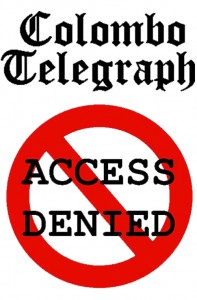The PRRA Killer’s Diary: Ranil W, Rajitha R And The Left

By Rajan Hoole -February 28, 2014 |
1989: The Eclipse of the JVP and the Perplexity of the Left – Part 3
The PRRA (Peoples Revolutionary Red Army)
The core of the PRRA was drawn mainly from the SLMP (Sri Lanka People’s Party). It also had close links with the ISU (Independent Students’ Union) whose leader Daya Pathirana had been killed by the JVP and its new leader Dharmasiri was under threat and was killed in the latter half of 1989. Another group SRRA (the Socialist Revolutionary Red Army) had similar connections. The account below relies mainly on a police report.
The beginnings of the PRRA are connected with the formation of death squads, mainly under leading UNP politicians. With the multiplication of these squads, they were loosely linked through a hierarchy of government politicians, military co-ordinating officers and police officers. The North Western Province (NWP) was divided into two areas coming under Cabinet Minister Festus Perera based in Wennapuwa and Chief Minister Gamini Jayawickrema Perera based in Kurunegala. Security meetings were held in these two locations with security officials, and decisions to be carried were made by these politicians. Decisions were also taken about those who did not co-operate. Colonel Janaka Perera was made co-ordinating officer for the NWP from about the end of 1988.
The antecedents of the PRRA were some men of the PLOTE, a Tamil militant group, based at Festus Perera’s house. [These PLOTE members may be those connected with Uma Prakash. Members of this faction who went to India after the internal killing of Uma Maheswaran in July 1989, were brought back from India reportedly after discussions with Prime Minister Ranil Wickremasinghe for security operations in Colombo in 1993.] Those based in Wenappuwa are said to have been used to carry out assassinations. They ‘disappeared’ after becoming a nuisance through indulging in unauthorised criminal activities on their own. [Interestingly, Uma Prakash faced a similar fate in early 1994.]
About the same time as the PLOTE men disappeared, about March 1989, killer teams were formed based on police districts commanded by ASPs. These teams were formed of CSU (Counter-Subversive Unit) members and in the NWP. They were based in Wennappuwa, Chilaw, Puttalam, Nikeravetiya, Kurunegala, Kuliyapitiya, Mahawe and one or two other places. Several men in different units who did not take part are said to have been eliminated. Some who left the CSU had become traumatised. Read More

